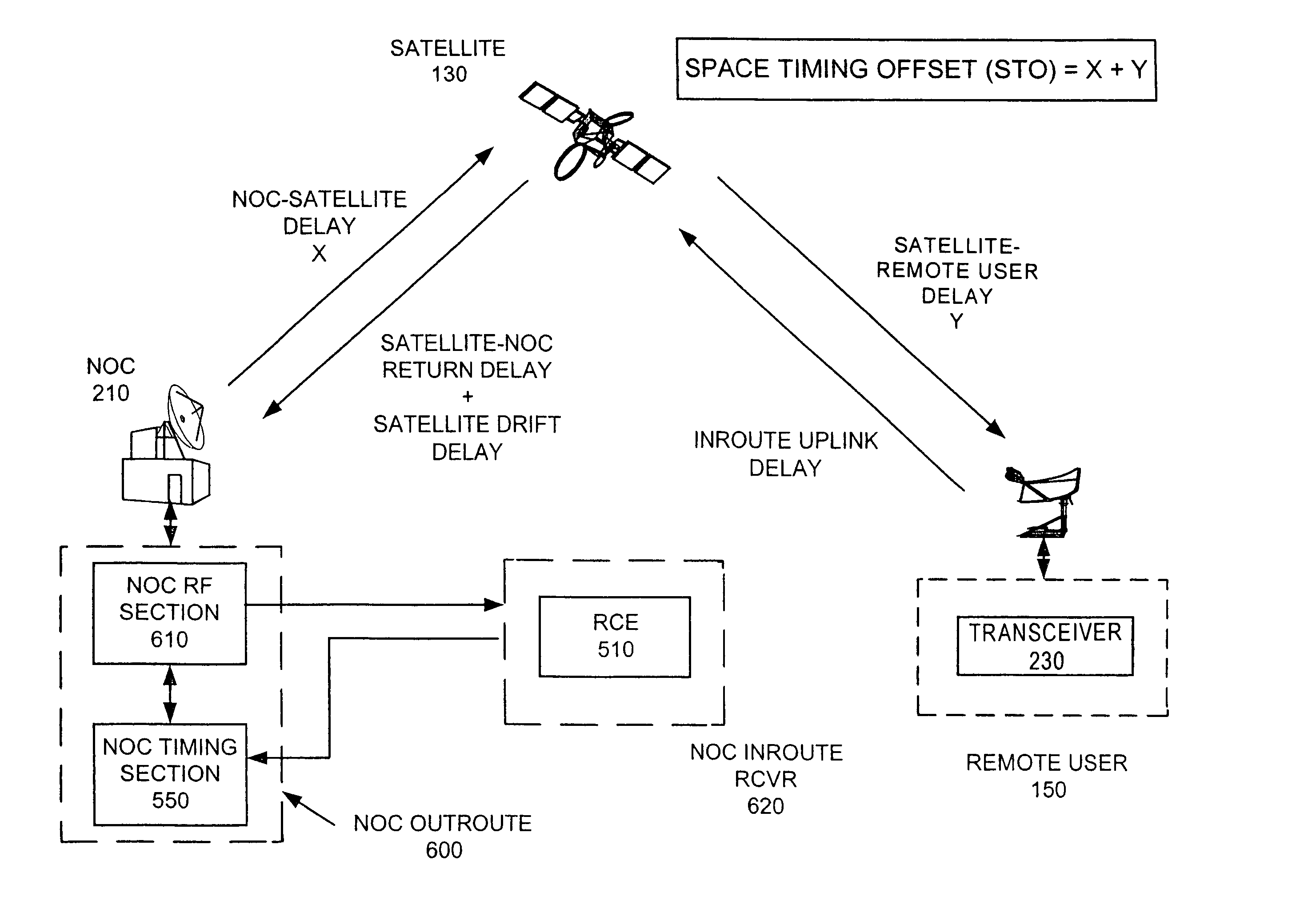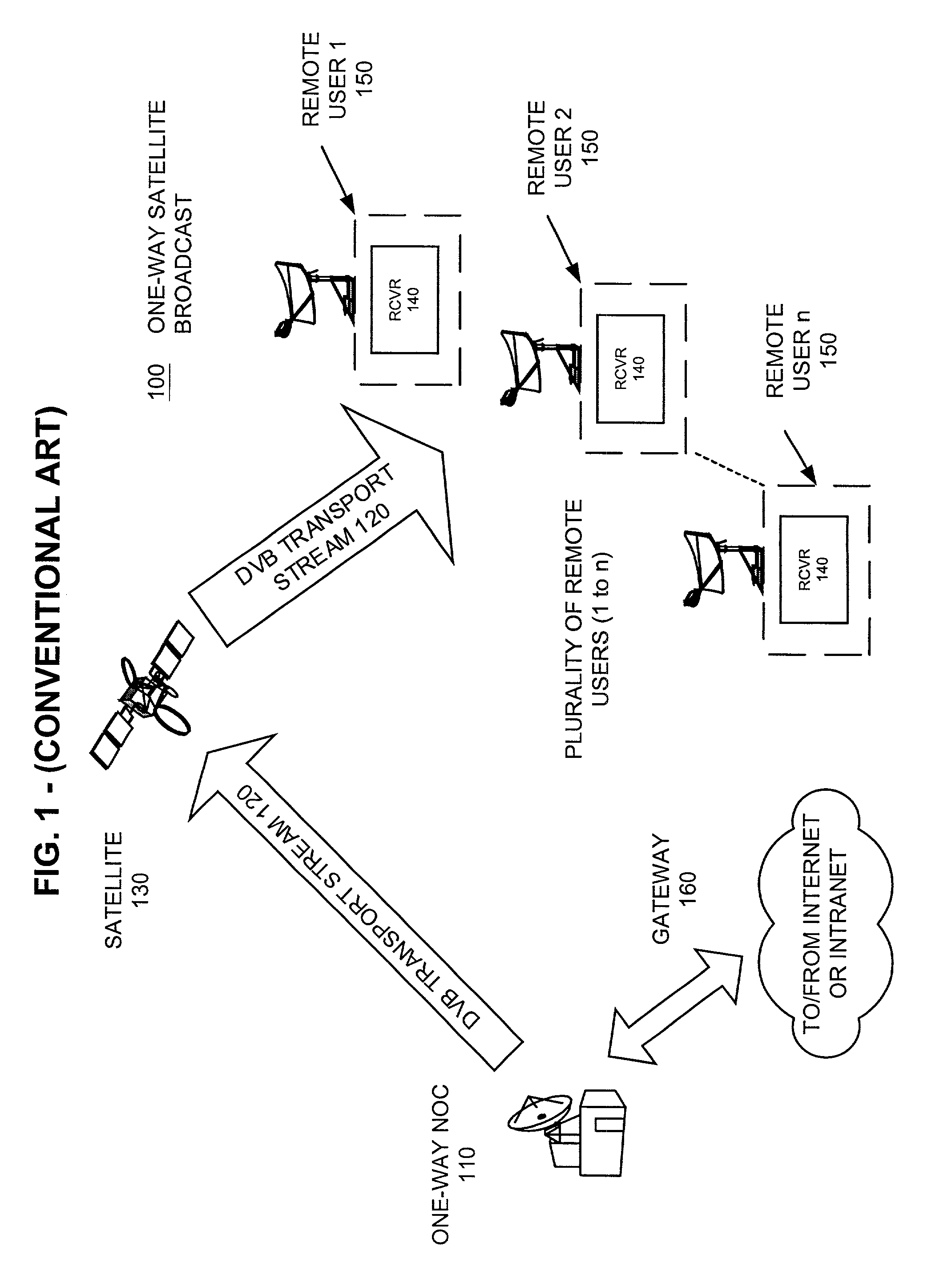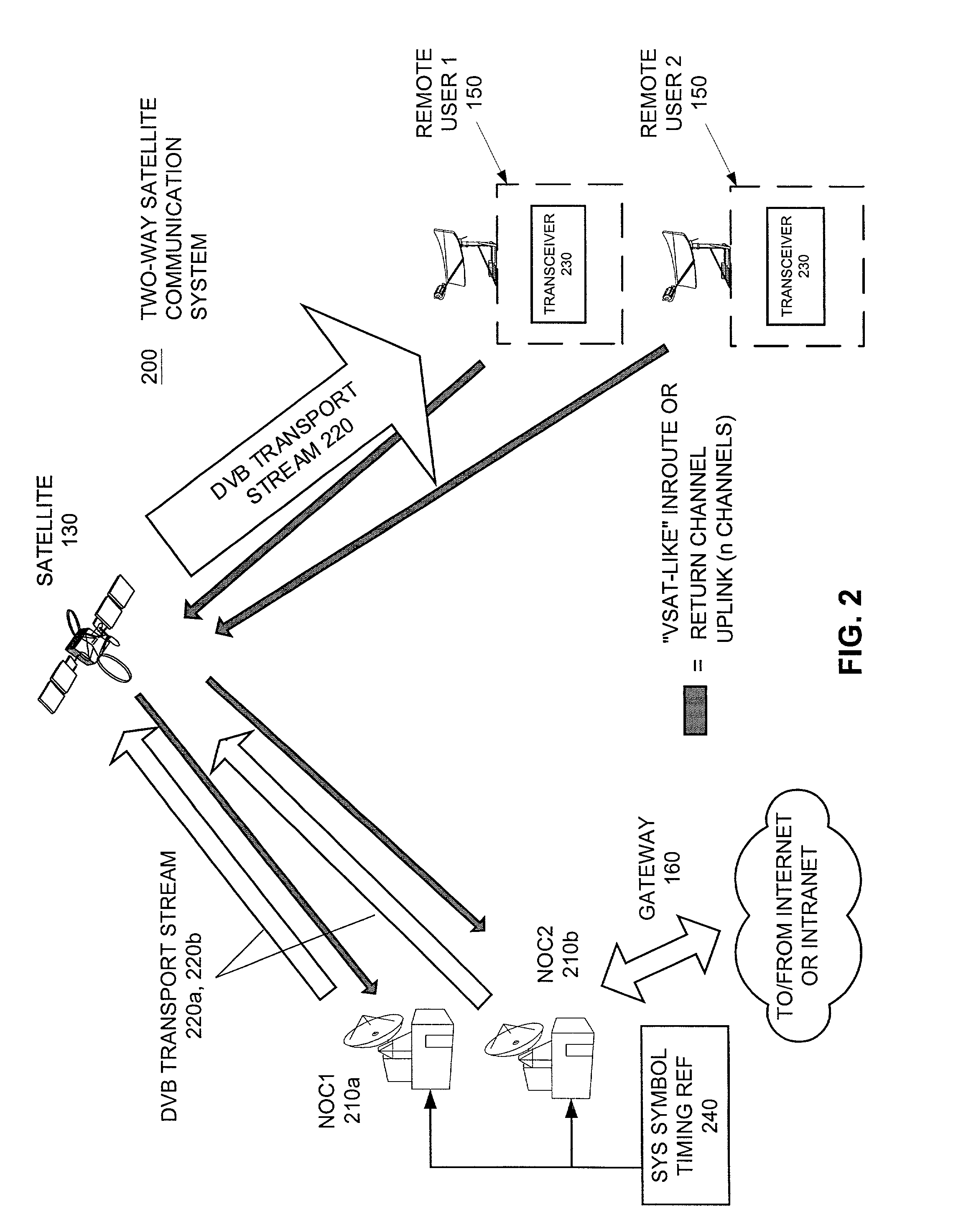Method and apparatus for deriving uplink timing from asynchronous traffic across multiple transport streams
a technology of asynchronous traffic and uplink timing, applied in the field of data timing sharing and recovery in the communication system, can solve the problems of large overlap of user transmissions, too wide in scope to directly apply dvb, and inability to provide all the information necessary in the mpeg-2 specification, so as to reduce collisions of user transmissions
- Summary
- Abstract
- Description
- Claims
- Application Information
AI Technical Summary
Benefits of technology
Problems solved by technology
Method used
Image
Examples
Embodiment Construction
[0039]A preferred embodiment of the method and system of providing TDMA system timing of the present invention is described below. Although described generally in terms of Hughes Network Systems' Two-Way DirecPC® for ease of discussion, the thrust of the communication timing sharing system and method of the present invention could be embodied in other forms with only slight variations as to the detailed implementation. It also will be obvious to skilled artisans in the relevant art that all features of the invention will not be described or shown in detail for the sake of brevity and clarity.
[0040]An exemplary one-way conventional satellite broadcast system 100 is depicted in FIG. 1. The present invention is designed to control the burst timing of a group of return channels that share the same frame timing, as previously mentioned. For simplicity, this system is characterized in FIG. 2 as including one or more Network Operations Center (NOC) 210 (also commonly known as a “hub”, “out...
PUM
 Login to View More
Login to View More Abstract
Description
Claims
Application Information
 Login to View More
Login to View More - R&D
- Intellectual Property
- Life Sciences
- Materials
- Tech Scout
- Unparalleled Data Quality
- Higher Quality Content
- 60% Fewer Hallucinations
Browse by: Latest US Patents, China's latest patents, Technical Efficacy Thesaurus, Application Domain, Technology Topic, Popular Technical Reports.
© 2025 PatSnap. All rights reserved.Legal|Privacy policy|Modern Slavery Act Transparency Statement|Sitemap|About US| Contact US: help@patsnap.com



